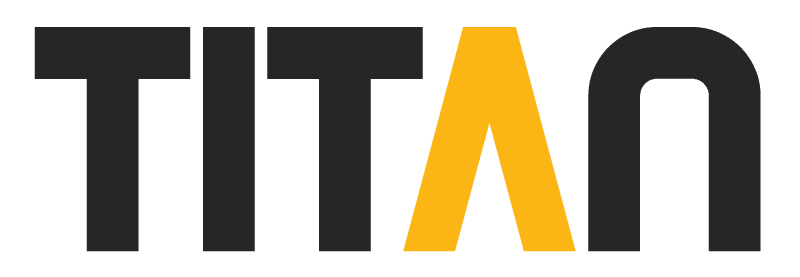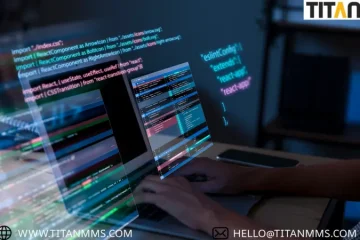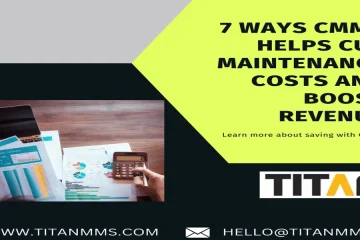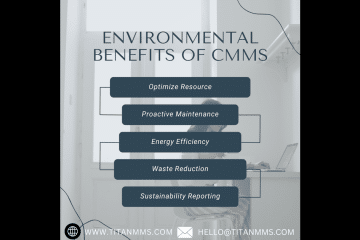Introduction
In today’s fast-paced business environment, maximizing efficiency and minimizing downtime are crucial. Computerized Maintenance Management Systems (CMMS) have emerged as essential tools for achieving these goals. However, the success of a CMMS implementation largely depends on how well your team is trained to use it. In this guide, we’ll delve into the steps and strategies to train your team effectively for CMMS use, ensuring you reap the full benefits of this powerful tool.
Understanding CMMS
What is CMMS?
A CMMS, or Computerized Maintenance Management System, is a software solution designed to streamline maintenance management processes. It helps organizations track maintenance tasks, manage work orders, inventory, and schedule preventive maintenance, ensuring equipment reliability and operational efficiency.
Key Features of CMMS
- Work Order Management: Simplifies the creation, assignment, and tracking of maintenance tasks.
- Preventive Maintenance Scheduling: Automates maintenance schedules to prevent equipment failures.
- Inventory Management: Tracks spare parts and supplies, reducing stockouts and overstock situations.
- Reporting and Analytics: Provides insights into maintenance performance and areas for improvement.
Industries Benefiting from CMMS
- Manufacturing: Enhances equipment uptime and productivity.
- Healthcare: Ensures the reliability of critical medical equipment.
- Facilities Management: Improves the efficiency of building maintenance.
- Utilities: Manages infrastructure maintenance effectively.
Setting Training Goals
Defining Clear Objectives
Before diving into training, it’s essential to establish clear objectives. What do you want to achieve with CMMS training? Your goals might include reducing downtime, improving maintenance efficiency, or enhancing compliance with regulations. Clear objectives will guide your training plan and help measure its success.
Aligning Goals with Business Needs
Ensure that your training goals align with your organization’s broader business needs. For instance, if your company aims to reduce operational costs, your CMMS training should focus on optimizing maintenance processes and minimizing equipment failures.
Choosing the Right Training Approach
Onsite Training
Onsite training involves bringing trainers to your location to conduct sessions in person. This approach allows for hands-on learning and immediate feedback but can be costly and logistically challenging.
Online Training
Online training offers flexibility and convenience, allowing employees to learn at their own pace. It’s cost-effective and scalable, making it ideal for large organizations or geographically dispersed teams.
Blended Learning
Blended learning combines onsite and online training methods. It provides the benefits of both approaches, ensuring comprehensive training while accommodating different learning preferences.
Developing a Training Plan
Identifying Training Needs
Conduct a thorough assessment to identify your team’s training needs. This could involve surveys, interviews, and analyzing performance data to pinpoint knowledge gaps and areas for improvement.
Creating a Training Schedule
Develop a training schedule that balances training sessions with regular work duties. Ensure the schedule is realistic and allows enough time for employees to absorb and practice new skills.
Selecting Trainers
Choose trainers who are not only knowledgeable about CMMS but also skilled in teaching and engaging with learners. They could be internal experts or external consultants with specialized expertise.
Customizing Training Content
Tailoring to Specific Roles
Different roles within your organization will interact with CMMS in various ways. Customize the training content to address the specific needs of technicians, managers, and administrators.
Including Real-Life Scenarios
Incorporate real-life scenarios and examples relevant to your industry and operations. This makes the training more practical and helps employees understand how to apply their knowledge in real situations.
Utilizing Interactive Content
Engage learners with interactive content such as quizzes, simulations, and hands-on exercises. Interactive elements keep participants engaged and enhance knowledge retention.
Implementing Training Programs
Step-by-Step Training Implementation
Roll out the training program in manageable phases. Start with basic functionalities and gradually move to more advanced features, allowing employees to build their skills progressively.
Engaging Employees in Training
Encourage active participation by making training sessions interactive and relevant. Use incentives, such as certifications or rewards, to motivate employees to complete the training.
Overcoming Resistance to Change
Change can be daunting, and some employees might resist new systems. Address their concerns by highlighting the benefits of CMMS and involving them in the training process from the start.
Utilizing Training Tools and Resources
Training Software
Invest in training software that offers interactive modules, progress tracking, and assessments. This software can complement your training sessions and provide additional support.
E-Learning Platforms
E-learning platforms offer a wealth of resources, including videos, tutorials, and forums. They allow employees to access training materials anytime, anywhere, enhancing flexibility.
Manuals and Guides
Provide comprehensive manuals and guides that employees can refer to during and after training. These resources serve as handy references, reinforcing what they’ve learned.
Evaluating Training Effectiveness
Measuring Knowledge Retention
Assess knowledge retention through tests, quizzes, and practical assessments. This helps determine how well employees have grasped the training content.
Gathering Feedback
Collect feedback from participants to understand their experiences and identify areas for improvement. Use surveys, interviews, and informal discussions to gather insights.
Assessing Performance Improvement
Evaluate the impact of training on job performance. Look for improvements in maintenance efficiency, reduced downtime, and better compliance with maintenance schedules.
Ongoing Support and Refresher Courses
Providing Continuous Support
Offer continuous support to address any questions or challenges employees may face post-training. This could include help desks, forums, or regular check-ins with trainers.
Scheduling Regular Refresher Courses
Regular refresher courses help reinforce learning and keep employees updated on new features and best practices. Schedule these courses periodically to maintain proficiency.
Encouraging Continuous Learning
Foster a culture of continuous learning by encouraging employees to seek further training and development opportunities. This keeps skills sharp and promotes a proactive approach to maintenance.
Case Studies of Successful CMMS Training
Example 1: Manufacturing Industry
A manufacturing company implemented a comprehensive CMMS training program that reduced equipment downtime by 20%. The program included onsite workshops, online modules, and regular refresher courses.
Example 2: Healthcare Sector
A hospital introduced CMMS training for its maintenance staff, leading to a 15% improvement in equipment uptime. The training focused on preventive maintenance scheduling and work order management.
Common Challenges and Solutions
Dealing with Technological Barriers
Technological barriers can hinder training. Provide adequate resources, such as updated hardware and reliable internet connections, to ensure smooth training sessions.
Addressing Employee Reluctance
Employee reluctance is a common challenge. Involve employees early in the process, address their concerns, and highlight the benefits of CMMS to gain their buy-in.
Managing Training Costs
Training can be expensive, but it’s an investment. Consider blended learning approaches to balance costs and effectiveness, and explore grants or funding opportunities for training programs.
Best Practices for Effective CMMS Training
Involving Management
Involve management in the training process to demonstrate its importance and secure their support. Management buy-in is crucial for successful implementation.
Fostering a Culture of Learning
Promote a culture that values continuous learning and improvement. Encourage employees to share knowledge and collaborate, making training a collective effort.
Setting Realistic Expectations
Set realistic expectations for training outcomes. Understand that proficiency takes time and continuous effort, and celebrate incremental progress along the way.
Leveraging Feedback for Improvement
Collecting and Analyzing Feedback
Regularly collect feedback from trainees and analyze it to identify strengths and areas for improvement in your training program.
Making Data-Driven Adjustments
Use the feedback and performance data to make informed adjustments to your training approach. This ensures that the program remains effective and relevant.
Celebrating Successes and Milestones
Celebrate successes and milestones achieved through CMMS training. Recognizing achievements boosts morale and reinforces the value of the training program.
Conclusion
Training your team for effective CMMS use is a multifaceted process that requires careful planning, implementation, and continuous improvement. By setting clear objectives, choosing the right training approach, and leveraging tools and feedback, you can ensure your team is well-equipped to maximize the benefits of CMMS. Effective training not only enhances maintenance efficiency but also contributes to the overall success of your organization.
FAQs
Q1- What is the average duration for CMMS training?
A) The average duration for CMMS training varies but typically ranges from a few days to several weeks, depending on the complexity of the system and the depth of training required.
Q2- How can I measure the ROI of CMMS training?
A) You can measure the ROI of CMMS training by tracking key performance indicators such as reduced downtime, improved maintenance efficiency, and cost savings resulting from optimized maintenance processes.
Q3- What are some common pitfalls in CMMS training?
A) Common pitfalls include inadequate training resources, lack of management support, and insufficient follow-up and support post-training. Addressing these issues is crucial for successful training.
Q4- How often should refresher courses be conducted?
A) Refresher courses should be conducted regularly, at least annually, to reinforce learning and keep employees updated on new features and best practices.
Q5- Can CMMS training be outsourced?
A) Yes, CMMS training can be outsourced to specialized trainers or consultants who have the expertise and experience to deliver comprehensive and effective training programs.




0 Comments